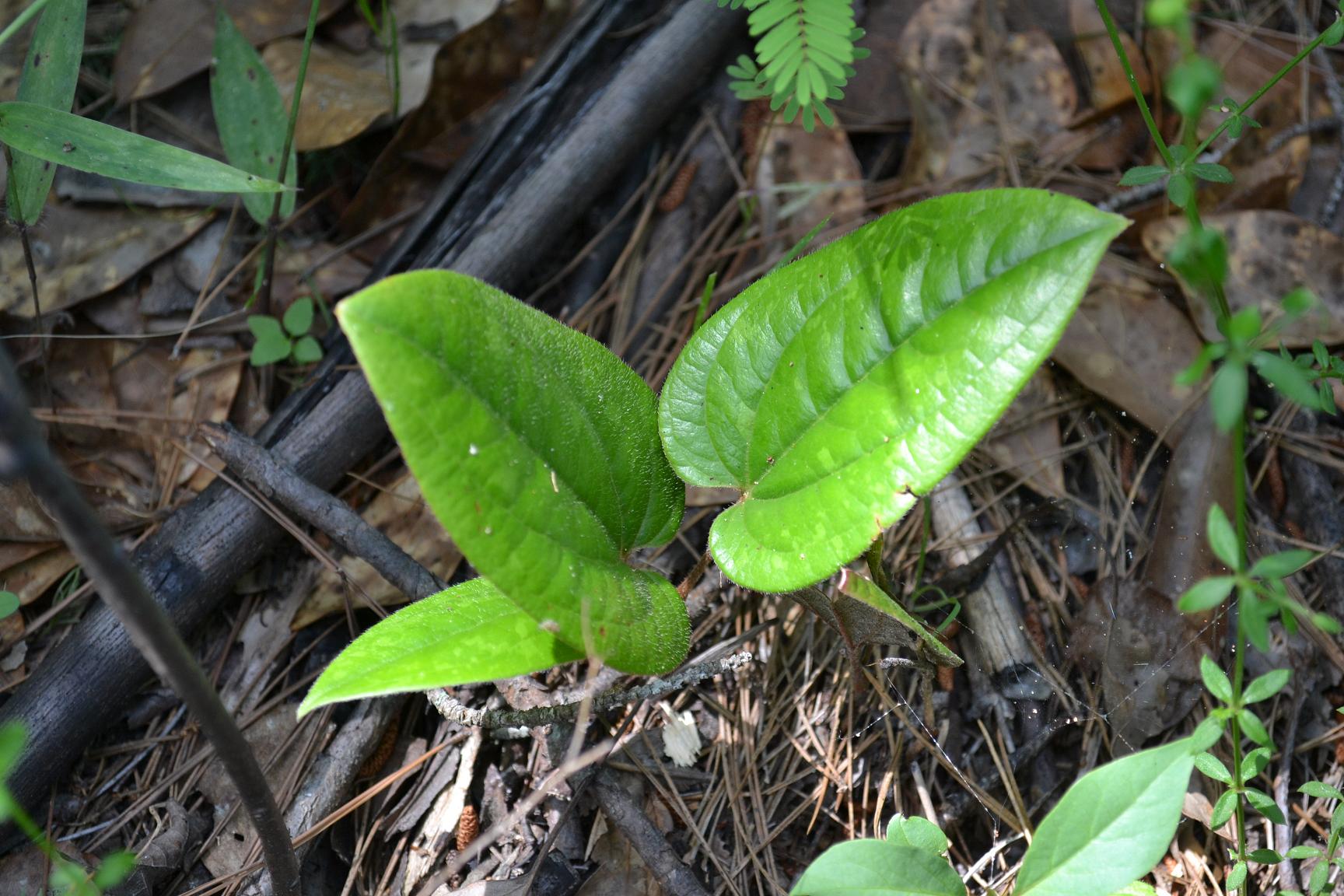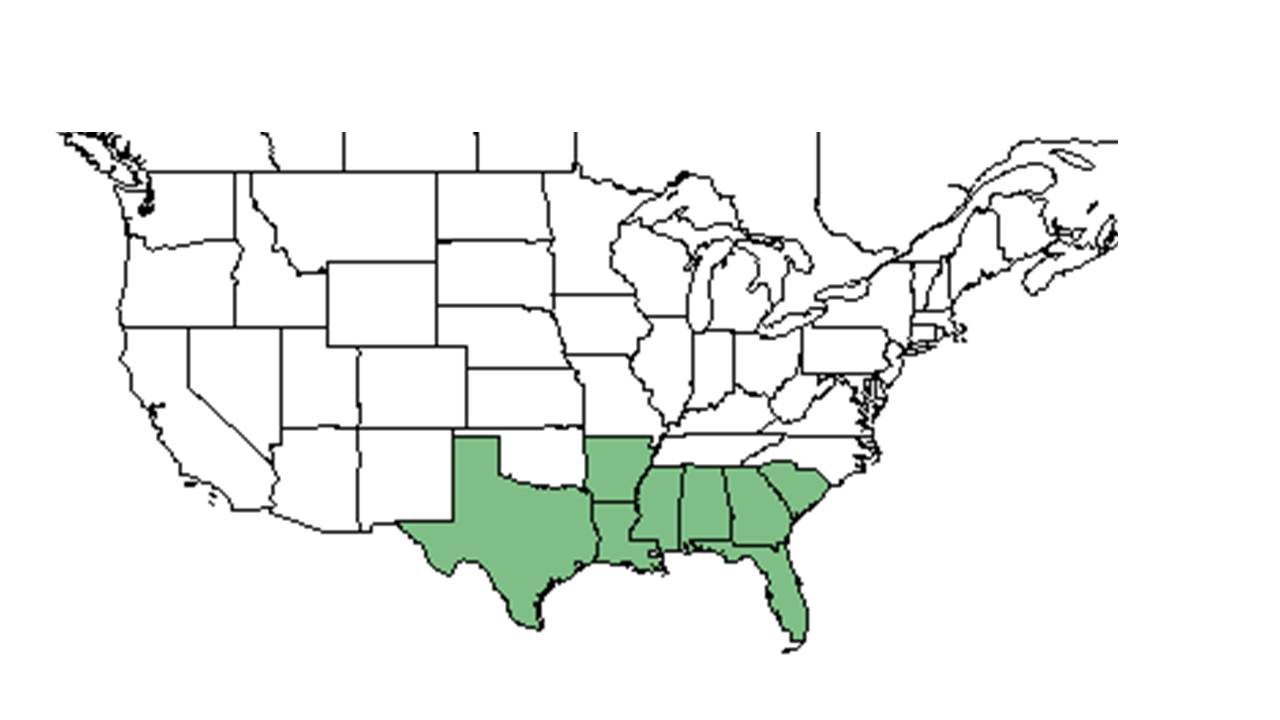Smilax pumila
| Smilax pumila | |
|---|---|

| |
| Photo taken by Kevin Robertson | |
| Scientific classification | |
| Kingdom: | Plantae |
| Division: | Magnoliophyta – Flowering plants |
| Class: | Liliopsida – Monocotyledons |
| Order: | Liliales |
| Family: | Smilacaceae |
| Genus: | Smilax |
| Species: | S. pumila |
| Binomial name | |
| Smilax pumila Walter | |

| |
| Natural range of Smilax pumila from USDA NRCS Plants Database. | |
Common names: Sarsparilla vine, Dwarf smilax
Contents
Taxonomic notes
Description
A description of Smilax pumila is provided in The Flora of North America.
Distribution
Ecology
Habitat
In the Coastal Plain in Florida and Georgia, S. pumila can be found along slopes, steep banks near rivers, Ilex woods, and in shaded forested floodplains.[1] Soil types include loamy sand and loamy soil.[1]
Phenology
It has been observed to flower and fruit in November.[1][2]
Fire ecology
Populations of Smilax pumila have been known to persist through repeated annual burns.[3]
Conservation, cultivation, and restoration
Cultural use
There are many species of Smilax and it is thought they can all be used in similar ways. Historically, the roots were harvested and prepared in a red flour or a thick jelly that could be used in candies and sweet drinks. Our first known written account of using the plant roots to make this jelly is from the journal of Captain John Smith in 1626. Other travelers throughout US history have made note of the uses of Smilax plants. We know the flour was used in breads and soups, and that a drink very similar to Sarsaparilla could be prepared.[4]
Photo Gallery
References and notes
- ↑ 1.0 1.1 1.2 Florida State University Robert K. Godfrey Herbarium database. URL: http://herbarium.bio.fsu.edu. Last accessed: July 2015. Collectors: C. Anderson, Rodie White, Robert K. Godfrey, R. Komarek, Annie Schmidt. States and Counties: Florida: Gadsden, Leon, Liberty. Georgia: Grady. Compiled by Tall Timbers Research Station and Land Conservancy.
- ↑ Nelson, G. PanFlora: Plant data for the eastern United States with emphasis on the Southeastern Coastal Plains, Florida, and the Florida Panhandle. www.gilnelson.com/PanFlora/ Accessed: 19 MAY 2021
- ↑ Robertson, K.M. Unpublished data collected from Pebble Hill Fire Plots, Pebble Hill Plantation, Thomasville, Georgia.
- ↑ Fernald, et al. 1958. Edible Plants of Eastern North America. Harper and Row Publishers, New York.